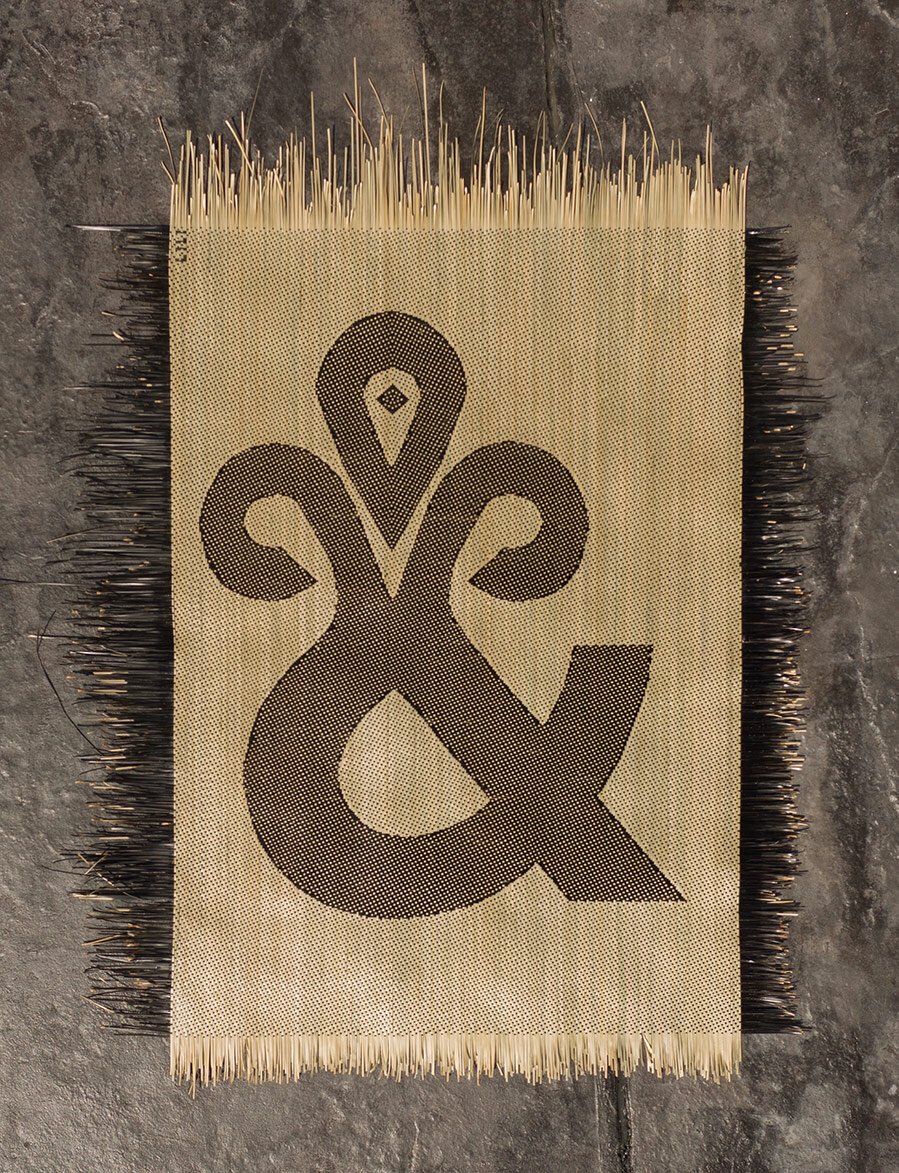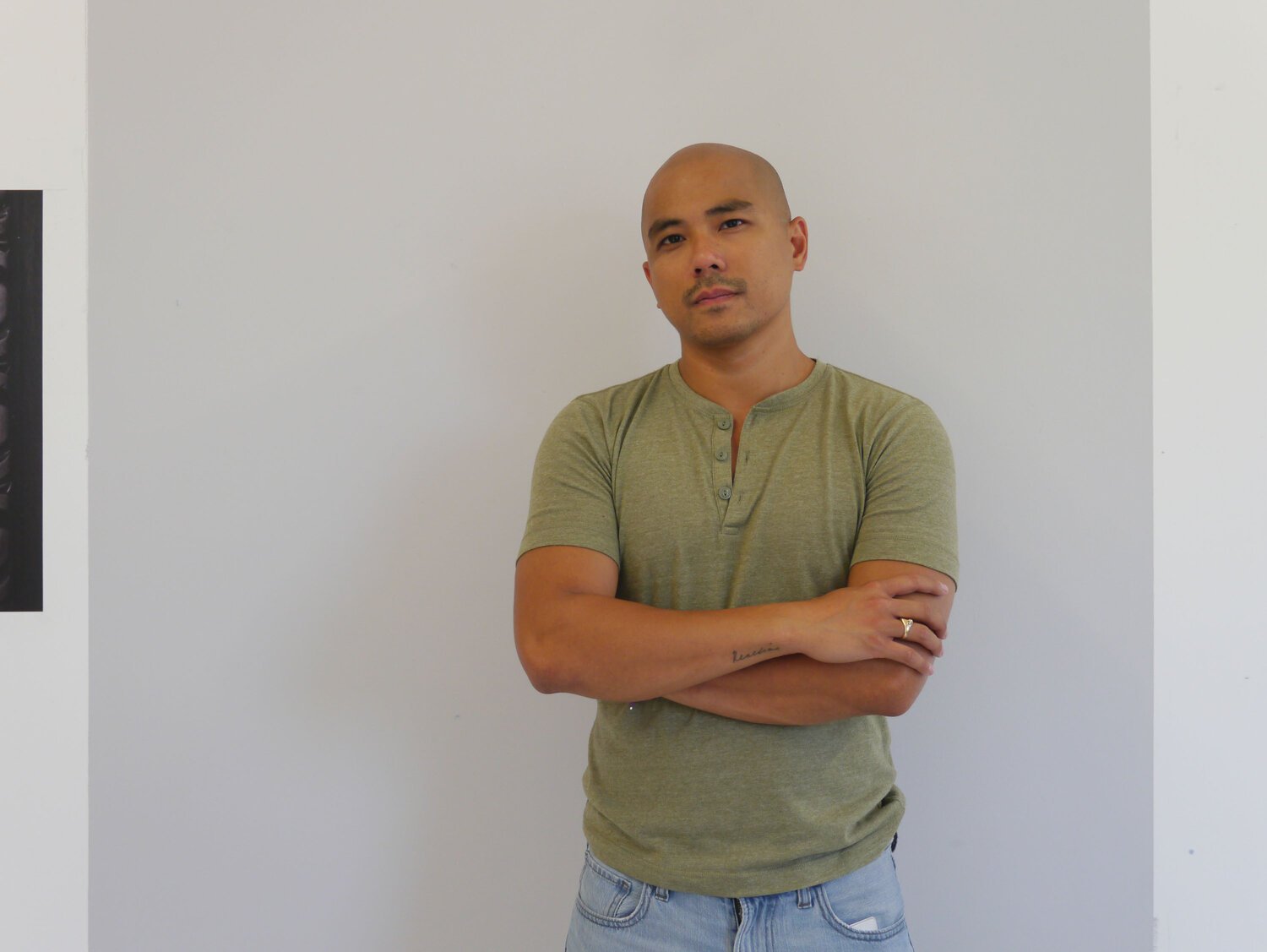Conversation with Gridthiya Gaweewong
Thai curator talks about Jim Thompson Art Center
By Ian Tee
This essay appears in CHECK-IN, an inclusive anthology of voices from the Southeast Asia art world published by A&M.
Gridthiya in the main gallery. Photo by Praweena Nekamanurak.
Born in Chiang Rai, Thailand in 1964, Gridthiya Gaweewong is one of the most prominent curators working out of Southeast Asia today. She was an English teacher and librarian at a refugee camp in Phanat Nikhom, before making a career switch to pursue her passion for art. In 1996, after receiving her Masters of Arts in Administrations and Policy from the School of the Art Institute of Chicago, Gridthiya co-founded the alternative art space Project 304 (1996−2003) with Montien Boonma and Kamol Phaosavasdi.
Ly Hoang Ly’s work at the Southern Women Museum, presented as part of Saigon Open City, 2006-2007, Ho Chi Minh City.
Her key projects include the Bangkok Experimental Film Festival (1997−2007), ‘Politics of Fun’ (Haus der Kulturen der Welt, 2005), ‘Saigon Open City’ (2006−2007) and the travelling exhibition ‘Apichatpong Weerasethakul: The Serenity in Madness’ (2016−2020). Gridthiya was also on the curatorial team for the 12th Gwangju Biennale ‘Imagined Borders’ (2018). Currently, she is Artistic Director of the Jim Thompson Art Center (JTAC) in Bangkok, a position she held since 2007.
In this conversation, Gridthiya shares her observations on shifts and challenges in the Thai art scene, as well as her plans for the new JTAC building which will be unveiled on 26 June 2021.
Could you talk about your involvement in The Alternative Art School (TAAS), an online art education initiative launched by Nato Thompson? Beyond the COVID-19 crisis, what impact do you see such alternative models of education having on the art ecosystem?
Nato Thompson and I have worked together since the early 2000s. He completed an internship at Project 304, an alternative space that my friends and I started in the mid-1990s. We remained in contact throughout his time as the artistic director of Creative Time. Nato approached me to join TAAS as a faculty member of the online art school, and said he would like to create a global alternative educational platform that is more affordable and accessible to the arts community. I could not say no. We had many meetings before the school opened, to define what an alternative school meant and to create supportive and friendly online learning experiences. Thus, there are many extra-curricular activities each week, such as visiting artists programmes and meals together. Students meet each other in groups they create based on their interests. It is an attempt to give people another chance to go to art school, and it is about networking and building up the global art community. Each faculty designs their own courses. For example, in my class about alternative art histories from Southeast Asian perspectives, we primarily have lectures and I have invited many guest speakers from the region, such as Dinh Q. Lê, Grace Samboh, Sawangwongse Yawnghwe and Ho Tzu Nyen.
The faculty has a weekly office hour for students to meet with us. We have many students from the United States, Europe and Asia. It is such a fresh and invigorating experience to get to know them, and we share the sense of being a part of something new. It is a kind of educational environment that I hope to realise in Thailand. Our education system in Thailand suffers from chronic problems, which are different from those in the United States. For us, it is very conservative, rigid and outdated, in need of a complete overhaul. An online platform like TAAS will open another channel for students and artists to access contemporary and global art education. Although the tuition is still relatively expensive in the Southeast Asian context, we help by arranging grants from museums such as MAIIAM in Chiang Mai to support Thai and Southeast Asian artists in their enrolment.
In a recent interview for Tatler Thailand’s ‘Future List’, you noted the emergence of art projects and institutions outside Bangkok, such as Khon Kaen Manifesto. What are the causes behind this growing decentralisation?
I think it reflects a growing sentiment of being fed up with state centralisation on many levels. This started at the end of the 19th century, during the reign of King Rama V, when Siam annexed Lanna, Isan and the Southern region, and continues today. Our generation, who were born and grew up in Northern and Northeastern Thailand in the postwar years, felt desperate and suffocated due to the lack of infrastructure, especially in education and art institutions.
These resources were centralised in the capital, forcing many of us to leave our hometowns for Bangkok to further our studies at the university level and for work after graduation. This is only one example of issues we have faced in the last century. The situation is still largely the same, so the decentralisation process must take place now. Otherwise, how long will we have to wait for change to happen?
How would you describe the relationship between Bangkok and other centers of creative production in Thailand today?
Unfortunately, Bangkok is still the key platform of distribution. However, it is not the production site for artists and designers due to high costs. That is why many artists began to move to Chiang Mai in the 1990s, and started small art galleries around the Nimmanhaemin area in the 2000s. This movement has slowly gained momentum over the last ten years, with many small studios and art projects springing up in smaller cities such as Patani, Rajburi, Khon Khaen, Udon and so on. That said, Bangkok has also regained some excitement with the emergence of artist-run spaces and independent galleries around N22, as well as the other clusters of young creative people around different parts of the city. The engagement of the Thailand Creative and Design Center (TCDC) with the New Road Creative District is notable too.
Apichatpong Weerasethakul, ‘Primitive’, 2012, exhibition view at Jim Thompson Art Center.
Rendering of the new Jim Thompson Art Center building by Design Qua.
The new Jim Thompson Art Center building is slated to open in June 2021. What are the upcoming programmes you are most excited about?
It is a major challenge to open amidst the COVID-19 crisis, but the show must go on. We have been discussing with our trustees and friends, rethinking our core values and mission. The JTAC would be more open and inclusive in its next chapter. Previously, our programmes were pretty exclusive and by invitation only. Hence, the first show will be an open call to artists in Southeast Asia and beyond, and a selection will be made by young curators and artists from the region. People have had the preconceived notion that our programmes are focused only on traditional art, textiles and fashion, which is not the case. We have hosted many contemporary art shows, such as Apichatpong Weerasethakul’s ‘Primitive’ (2011) and ‘Impressions: Soil and Stones, Souls and Songs’ (2017) curated by Cosmin Costinas. The programmes ahead will be more diverse, multidisciplinary and relevant to the current context. Even as we work to bridge the local, regional and global art communities, we are also looking into our history through archival materials from Jim Thompson’s personal collection and the JTAC archive.
“The JTAC would be more open and inclusive in its next chapter. Previously, our programmes were pretty exclusive and by invitation only. Hence, the first show will be an open call to artists in Southeast Asia and beyond, and a selection will be made by young curators and artists from the region.”
‘Impressions: Soil and Stones, Souls and Songs’, 2017, exhibition view at Jim Thompson Art Center.
Jim Thompson Art Center former exhibition space.
What does long-term sustainability look like for JTAC?
Long-term sustainability is very hard to achieve, requiring good strategy and action plans. Being financially sustainable is an art institution's ultimate dream. This is a serious concern and we are putting together a marketing strategy that involves ticket sales, membership programmes and fundraising efforts. We will continue working with existing partners and seek new ones for future collaborations, to co-curate and co-produce exhibitions and programmes.
Sunset seekers on the roof, Molam Bus at Wonderfruit Festival, Pattaya. Photo by John Clewley.
Villagers enjoying the Molam Bus exhibition, Wat Ta Pung. Photo by John Clewley.
Public participation has been an important part of your career from the beginning. Projects such as Saigon Open City (2006−2007) and the Molam Bus propose innovative ways of bringing art into public space and discourse. Are there specific strategies you would like to explore, or communities you have not engaged with yet?
It is important to understand who we are speaking to when we do the projects. Saigon Open City is totally different from Molam Bus, but what they have in common is community building in the Ho Chi Minh and Isan-based communities. 10 years ago, JTAC mainly served the art community and tourists to the Jim Thompson House Museum, but our community today is different. The polarisation of society has made it even more critical and challenging for institutions to engage with diverse audiences. What we would like to create is a contact zone for people, young and old, to interact, discuss and share their visions, frustrations and even imagine our unknown future.
“What we would like to create is a contact zone for people, young and old, to interact, discuss and share their visions, frustrations and even imagine our unknown future. ”
Burmese artist Po Po preparing his installation at Saigon Open City, 2006-2007, Ho Chi Minh City.
You recently published a research article which traces exhibition histories in Thailand starting with the royal court. What prompted your interest in this topic?
A few local historians such as Chatri Prakitnonthakan, Preedee Hongsaton and Thawatchai Ongwuthivage studied this history, but most of the research is published in the Thai language. What interested me were the class structure of curators, who they were, how exhibitions were developed, their motivations, and the audiences for these shows. What was the position of the public in the past? The background of these curators shifted from the royal court to the state, the elite class and then commoners. However, the trend seems to be swinging back towards the state and the court again today. Exhibitions continue to be contested grounds and are at times briefly occupied by the public. A recent example is the student protests at the Bangkok Art and Culture Centre that happened last year.
Having understood this historical context, how could practitioners address shortcomings?
Ultimately, it is about how much you care for your community and how you help create a better and healthier ecosystem. We all have different issues in each locality. In Thailand, democratic processes and freedom of expression are threatened by injustice and draconian laws. What we are fighting for is an on-going process, which might sometimes be exhausting. At the end of the day, caring for oneself is also very important to continue the fight.
Read other interviews like this in CHECK-IN here.






















